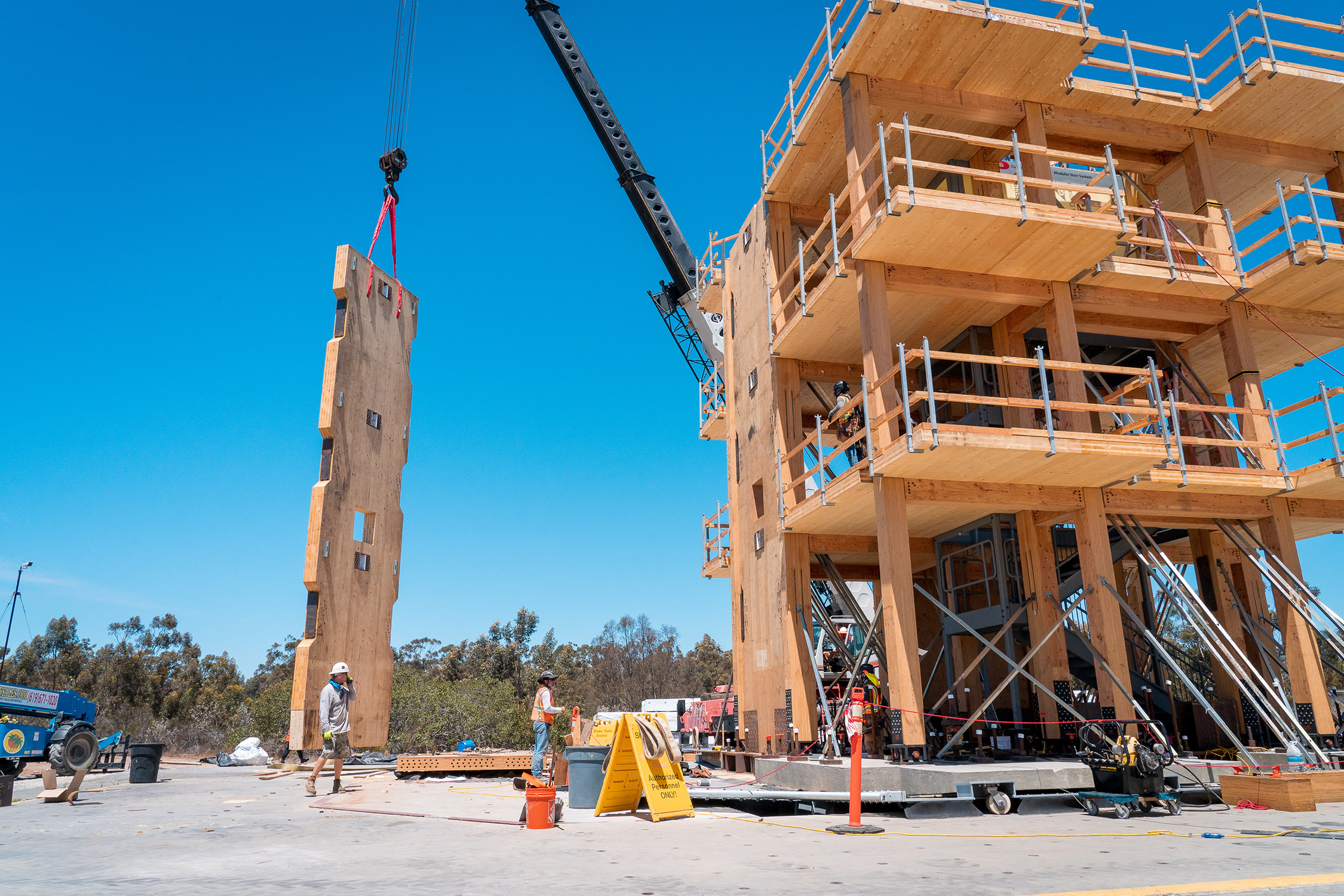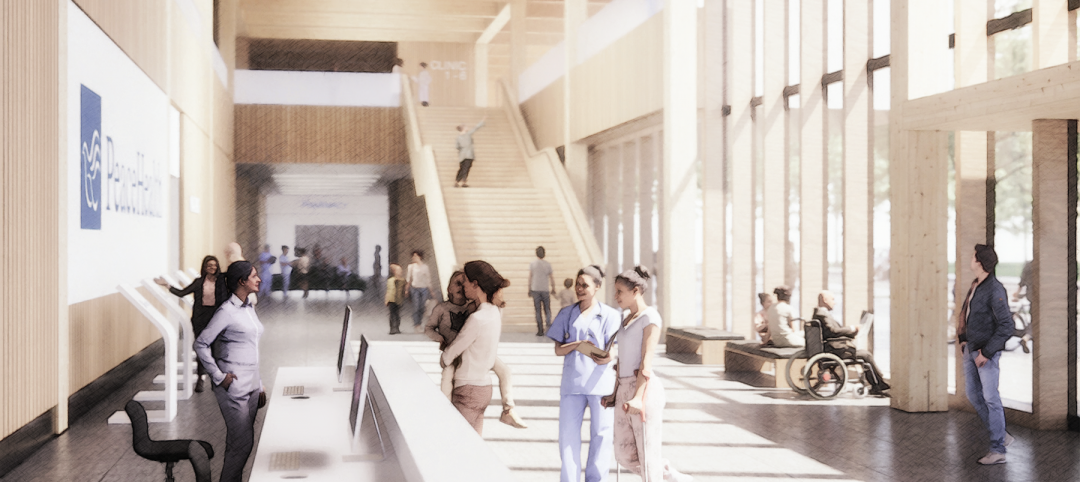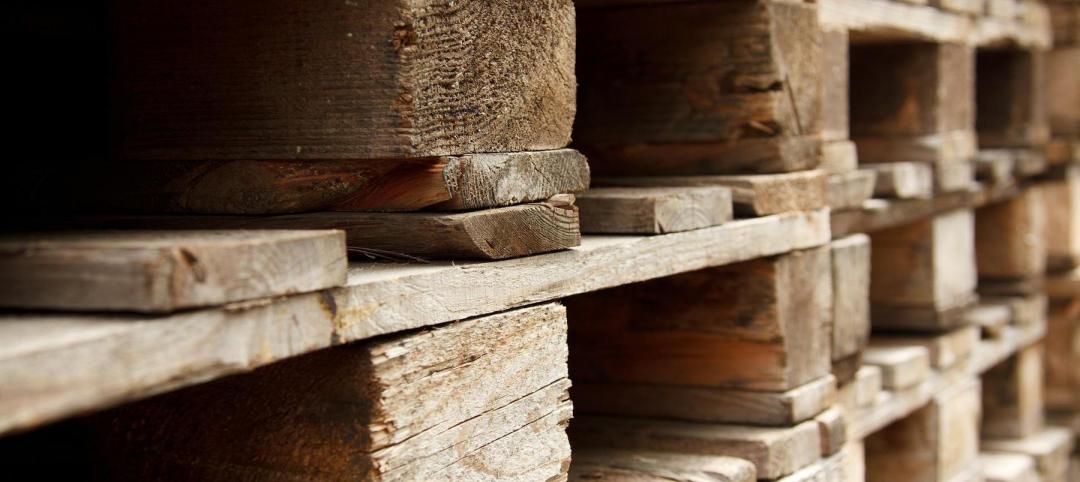Last month, a seismic shake test was conducted on a 10-story wooden structure—the world’s tallest building to be tested on a shake table earthquake simulator. The goal? To validate the strength of mass timber products during simulated earthquake conditions.
The two tests were successfully conducted at the University of California, San Diego (UCSD) on May 9. As part of the Natural Hazard Engineering Research Infrastructure (NHERI) Tall Wood Project, the mass timber building was designed by LEVER Architecture and developed as a market rate prototype.
The 10-story mass timber building design
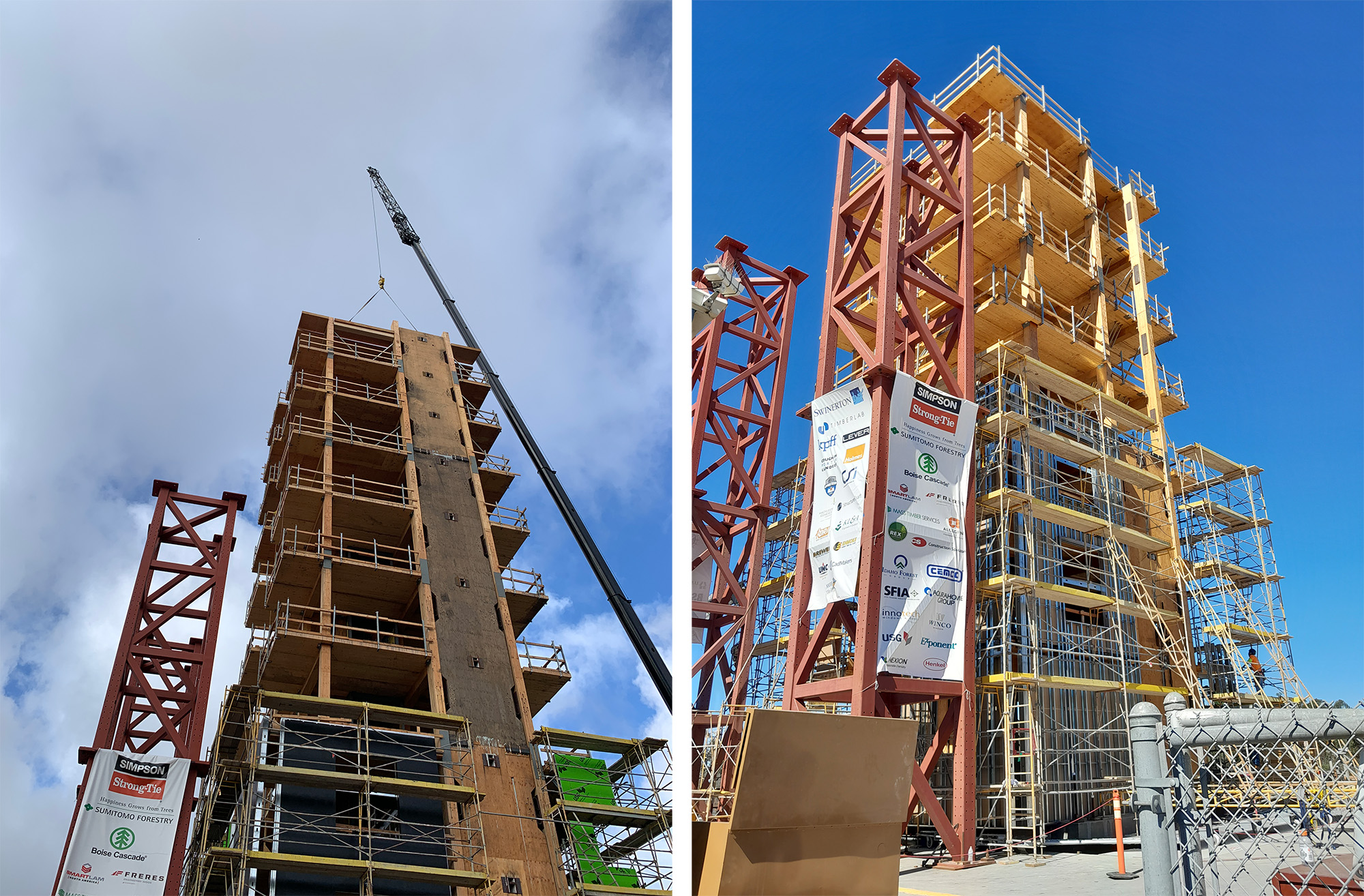
The 112-ft structure was largely built using donated mass timber products, including Cross Laminated Timber (CLT), Mass Plywood Panel (MPP), Nail-Laminated Timber (NLT), Dowel Laminated Timber (DLT), Veneer Laminated Timber (VLT), and Glulam. The design featured rocking walls that allowed the building to recenter itself during a seismic event. Additionally, post-tensioned steel rods on each floor were included to absorb the brunt of the seismic force.
The building featured four exterior façade assemblies, a number of interior walls, and a 10-story stair tower, to test the impact to safety-critical nonstructural components as well.
Mass timber shake test results
How did the building fare, then? The May 9 test simulated two previously recorded earthquakes—a magnitude 6.7 earthquake from 1994, and a 7.7 earthquake recorded in Taiwan circa 1999. UCSD’s shake table—the largest shake table in the world—measured 25 ft by 40 ft. Due to the building’s rocking wall lateral system, the building suffered minimal damage. The research partners believe a mass timber building like this would be quickly repairable after similar earthquakes.
Though the full findings of the test won’t be released until later this year, the project team believes this building type will be an answer to addressing urbanization demand while enhancing resilience and sustainability. While this test focused on seismic viability, the team will now deconstruct the top four floors of the building for research on mass timber deconstruction. Oregon State University will do additional tests to gather data for end-of-life reuse of mass timber.
NHERI TallWood seismic test project partners
In addition to University of California San Diego, a number of universities collaborated on the project, including the Colorado School of Mines; the University of Nevada, Reno; Colorado State University; the University of Washington; Washington State University; Oregon State University; and Lehigh University.
The NHERI TallWood project was funded by the U.S. National Science Foundation; it received support from the USDA Forest Products Laboratory and the U.S. Forest Service, as well as additional building industry partners including Construction Specialties, Simpson Strong-Tie, and JMC² Civil + Structural Engineering. The structure’s Mass Ply shake walls were supplied by Freres Engineered Wood.
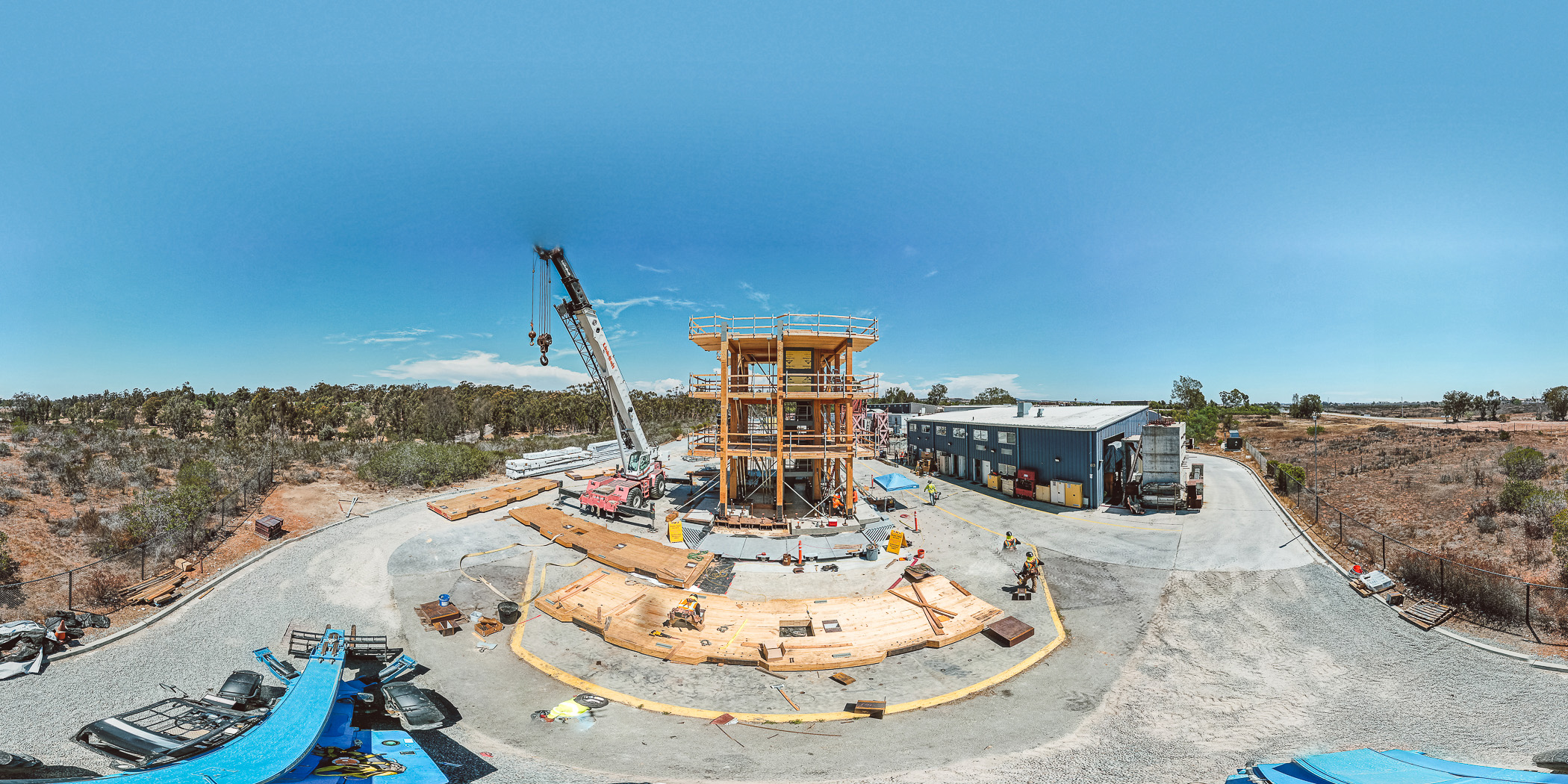
Related Stories
Mass Timber | Jan 30, 2023
Net-positive, mass timber building will promote research on planetary well-being in Barcelona
ZGF Architects, along with Barcelona-based firms MIRAG and Double Twist, have designed a net-positive, mass timber center for research on planetary well-being. Located in Barcelona, the Mercat del Peix Research Center will bring together global experts in the experimental sciences, social sciences, and humanities to address challenges related to the future of the planet.
Mass Timber | Jan 27, 2023
How to set up your next mass timber construction project for success
XL Construction co-founder Dave Beck shares important preconstruction steps for designing and building mass timber buildings.
Mass Timber | Dec 1, 2022
Cross laminated timber market forecast to more than triple by end of decade
Cross laminated timber (CLT) is gaining acceptance as an eco-friendly building material, a trend that will propel its growth through the end of the 2020s. The CLT market is projected to more than triple from $1.11 billion in 2021 to $3.72 billion by 2030, according to a report from Polaris Market Research.
| Sep 13, 2022
California building codes now allow high-rise mass-timber buildings
California recently enacted new building codes that allow for high-rise mass-timber buildings to be constructed in the state.
Mass Timber | Aug 30, 2022
Mass timber construction in 2022: From fringe to mainstream
Two Timberlab executives discuss the market for mass timber construction and their company's marketing and manufacturing strategies. Sam Dicke, Business Development Manager, and Erica Spiritos, Director of Preconstruction, Timberlab, speak with BD+C's John Caulfield.
| Aug 8, 2022
Mass timber and net zero design for higher education and lab buildings
When sourced from sustainably managed forests, the use of wood as a replacement for concrete and steel on larger scale construction projects has myriad economic and environmental benefits that have been thoroughly outlined in everything from academic journals to the pages of Newsweek.
Mass Timber | Jun 29, 2022
Mass timber competition: building to net-zero winning proposals
The 2022 Mass Timber Competition: Building to Net-Zero is a design competition to expand the use of mass timber in the United States by demonstrating its versatility across building types and its ability to reduce the carbon footprint of the built environment.
Mass Timber | Jun 2, 2022
Brooklyn is home to New York City’s first mass timber condo building
In the Brooklyn neighborhood of Park Slope, the newly completed Timber House is New York City’s first mass timber condominium building and its largest mass timber project (by height and square footage).
Mass Timber | May 31, 2022
Tall mass timber buildings number 139 worldwide
An audit of tall mass timber buildings turned up 139 such structures around the world either complete, under construction, or proposed.
Mass Timber | Mar 8, 2022
Heavy timber office and boutique residential building breaks ground in Austin
T3 Eastside, a heavy timber office and boutique residential building, recently broke ground in Austin, Texas.


